FCL Autoparts Shipping: A Complete Guide to Full Container Load Shipping for Auto Parts
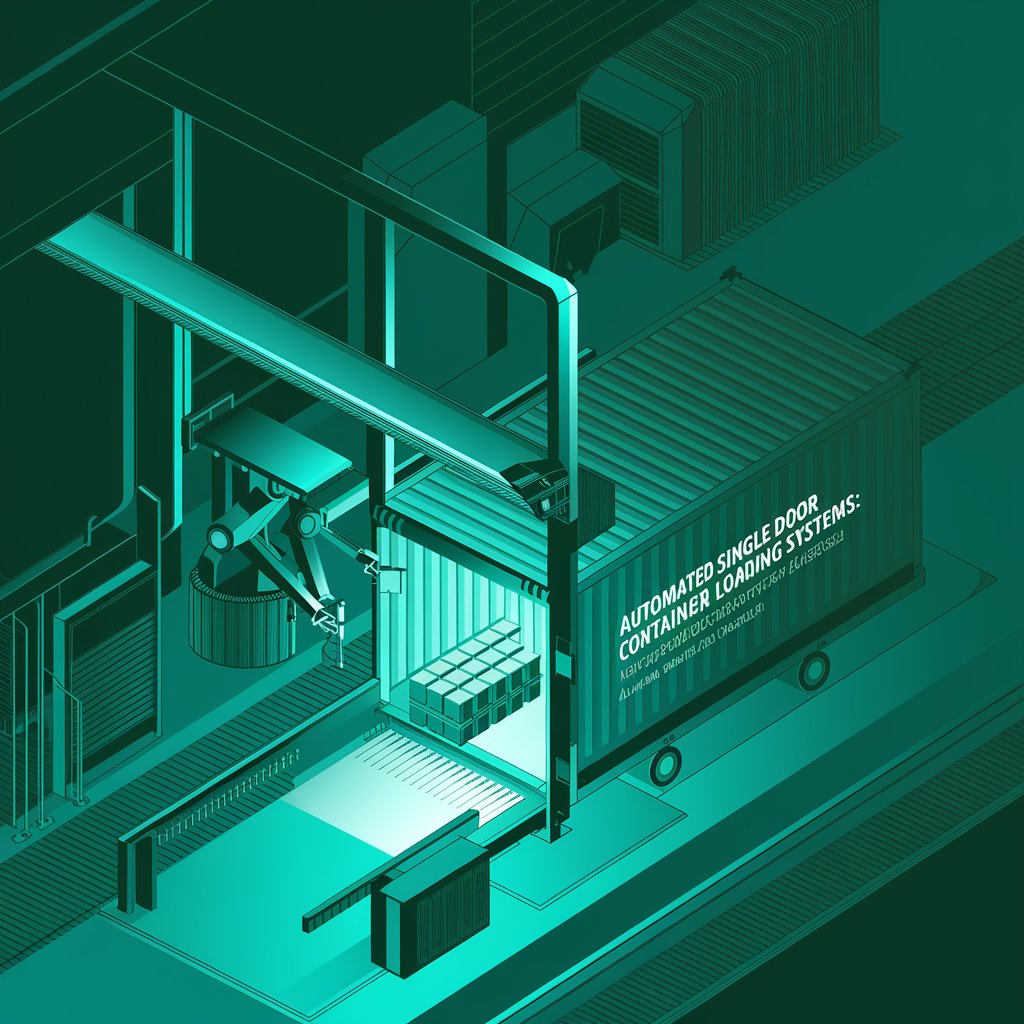
What is FCL Shipping?
Before diving deeper into FCL autoparts shipping, it’s essential to understand what FCL shipping entails. Full Container Load (FCL) shipping is a method where an entire shipping container is used exclusively by one shipper. This means that all the space within the container is dedicated to your auto parts, providing you with complete control over the cargo inside.
FCL shipping differs significantly from Less than Container Load (LCL) shipping, where multiple shippers share space within a single container. With FCL autoparts shipping, you’re not sharing space with other goods, which can be particularly beneficial when dealing with valuable or sensitive automotive components.
Key characteristics of FCL shipping include:
- Exclusive use of the entire container
- Direct transport from origin to destination without consolidation
- Greater flexibility in loading and unloading schedules
- Reduced handling of goods, minimizing the risk of damage
Understanding these basics is crucial when considering FCL autoparts shipping for your business.
Why Use FCL Shipping for Auto Parts?
FCL autoparts shipping offers several compelling advantages that make it an attractive option for many automotive businesses. Let’s explore the key benefits:
1. Enhanced Security
One of the primary advantages of FCL autoparts shipping is the increased security it provides. With your auto parts being the only cargo in the container, there’s a significantly reduced risk of damage, theft, or contamination from other goods. This is particularly important when shipping high-value or sensitive automotive components that require special handling or environmental conditions.
2. Cost Efficiency for Large Shipments
While FCL shipping might seem more expensive at first glance, it becomes highly cost-effective when shipping large volumes of auto parts. Unlike LCL shipping, where you pay for the space your goods occupy (usually calculated per cubic meter), FCL autoparts shipping allows you to utilize the entire container space for a flat rate. This can lead to substantial savings, especially for businesses regularly shipping large quantities of auto parts.
3. Faster Transit Times
FCL autoparts shipping typically offers faster transit times compared to LCL. This is because FCL shipments don’t require consolidation at the origin port or deconsolidation at the destination. Your container moves directly from the loading point to the final destination, reducing the chances of delays and ensuring your auto parts arrive in a timely manner.
4. Greater Control Over Loading
With FCL autoparts shipping, you have full control over how the container is loaded. This allows you to optimize the space efficiently and implement custom loading solutions that protect your specific types of auto parts. You can use specialized racks, dividers, or packaging methods to ensure that each component is secure and protected throughout the journey.
5. Simplified Tracking and Documentation
FCL shipments are easier to track and manage compared to LCL. With a single container dedicated to your auto parts, you’ll have a straightforward bill of lading and a single tracking number to monitor your shipment’s progress. This simplifies logistics management and makes it easier to provide accurate updates to your customers or partners.
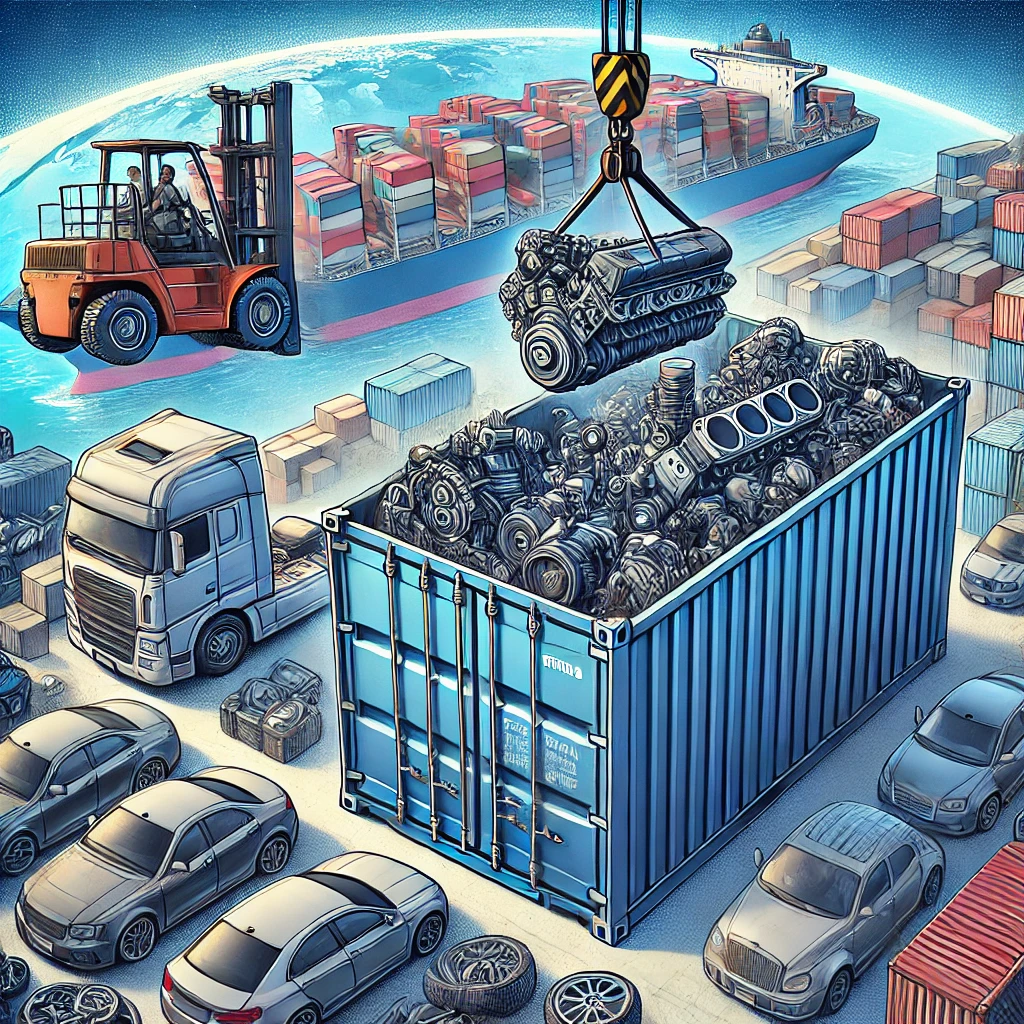
Key Steps in FCL Autoparts Shipping
To make the most of FCL autoparts shipping, it’s important to understand the key steps involved in the process. Here’s a step-by-step guide to help you navigate FCL shipping for your auto parts:
1. Determine Shipping Needs
The first step in FCL autoparts shipping is to assess your shipping needs. Consider the volume and type of auto parts you’re shipping, as well as the frequency of your shipments. FCL is generally most beneficial for businesses shipping large quantities of parts or those requiring special handling.
2. Select the Right Container Size
FCL autoparts shipping offers flexibility in container sizes. The most common options are:
- 20-foot container: Suitable for smaller shipments or dense, heavy auto parts
- 40-foot container: Ideal for larger volumes of auto parts
- 40-foot high-cube container: Offers additional vertical space, perfect for tall or bulky automotive components
Choose the container size that best fits your shipment volume while considering weight restrictions and loading efficiency.
3. Proper Packaging
Ensure that all auto parts are properly packaged to withstand the rigors of international shipping. This may include:
- Using sturdy boxes or crates
- Applying appropriate cushioning materials
- Securing parts to prevent movement within packages
- Clearly labeling each package with part numbers and handling instructions
Proper packaging is crucial in FCL autoparts shipping to prevent damage and facilitate easy identification upon arrival.
4. Book Your Shipment
Work with a reputable freight forwarder or shipping line to book your FCL container. Provide them with details about your shipment, including:
- Origin and destination
- Type and volume of auto parts
- Preferred shipping dates
- Any special handling requirements
5. Prepare Customs Documentation
Accurate and complete documentation is critical for smooth FCL autoparts shipping. Prepare the following documents:
- Commercial invoice
- Packing list
- Bill of lading
- Certificate of origin (if required)
- Any specific certifications required for auto parts in the destination country
6. Loading the Container
When the container arrives at your facility or designated loading point:
- Inspect the container for any damage or potential leaks
- Load the auto parts according to your pre-planned loading strategy
- Ensure even weight distribution to maintain container stability
- Use appropriate securing methods (straps, braces, etc.) to prevent shifting during transit
7. Shipping and Tracking
Once loaded and sealed, your FCL autoparts shipment will begin its journey. Use the provided tracking number to monitor your container’s progress through various checkpoints. Many shipping lines offer real-time tracking, allowing you to keep your customers informed about the shipment’s status.
8. Customs Clearance at Destination
Upon arrival at the destination port, your FCL autoparts shipment will undergo customs clearance. Ensure that all necessary duties are paid and documentation is in order to facilitate a smooth clearance process.
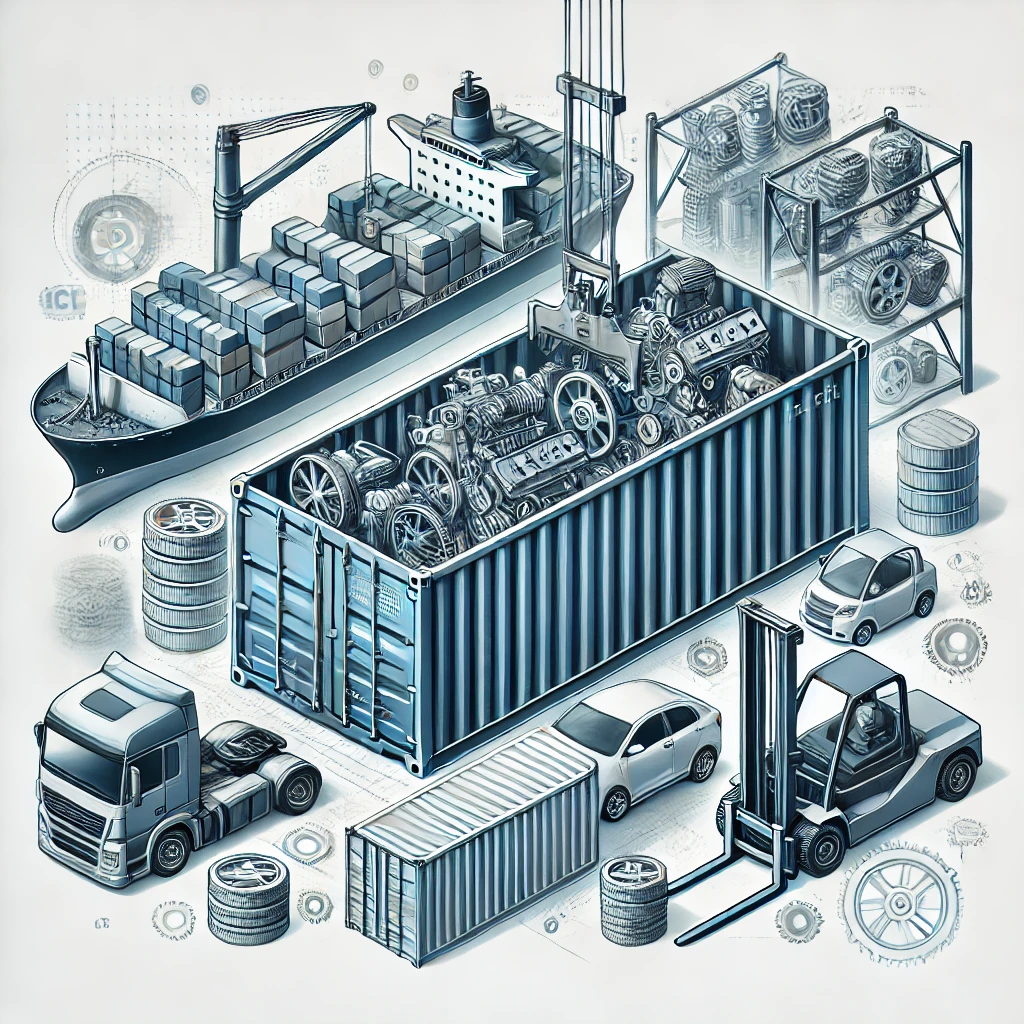
Best Practices for FCL Autoparts Shipping
To ensure successful FCL autoparts shipping, consider implementing these best practices:
- Use Professional Loaders: Hire experienced personnel who understand the nuances of loading auto parts to maximize space utilization and ensure cargo safety.
- Conduct Thorough Container Inspections: Always inspect the container for damage, cleanliness, and structural integrity before loading your auto parts.
- Optimize Container Space: Use custom racking systems, pallets, or specialized packaging solutions to make the most of the container space while protecting your auto parts.
- Implement Clear Labeling: Ensure all auto parts are clearly labeled with part numbers, descriptions, and any special handling instructions to facilitate easy identification and proper handling.
- Consider Climate Control: For sensitive auto parts, consider using climate-controlled containers to maintain optimal temperature and humidity levels during transit.
- Maintain Detailed Records: Keep comprehensive records of all shipments, including photos of loaded containers, to aid in resolving any potential disputes or insurance claims.
Cost Considerations for FCL Autoparts Shipping
When budgeting for FCL autoparts shipping, consider the following factors that influence costs:
- Container Size and Type: Larger containers or specialized types (e.g., refrigerated containers) will cost more.
- Shipping Route: Costs vary based on the origin and destination ports, with some routes being more expensive due to demand or distance.
- Additional Services: Factor in costs for customs clearance, insurance, and any port fees or handling charges.
- Fuel Surcharges: Be aware of fluctuating fuel prices that can impact overall shipping costs.
- Seasonal Variations: Shipping rates can vary based on peak seasons in the automotive industry or general shipping trends.
By understanding these cost factors, you can better plan and budget for your FCL autoparts shipping needs.
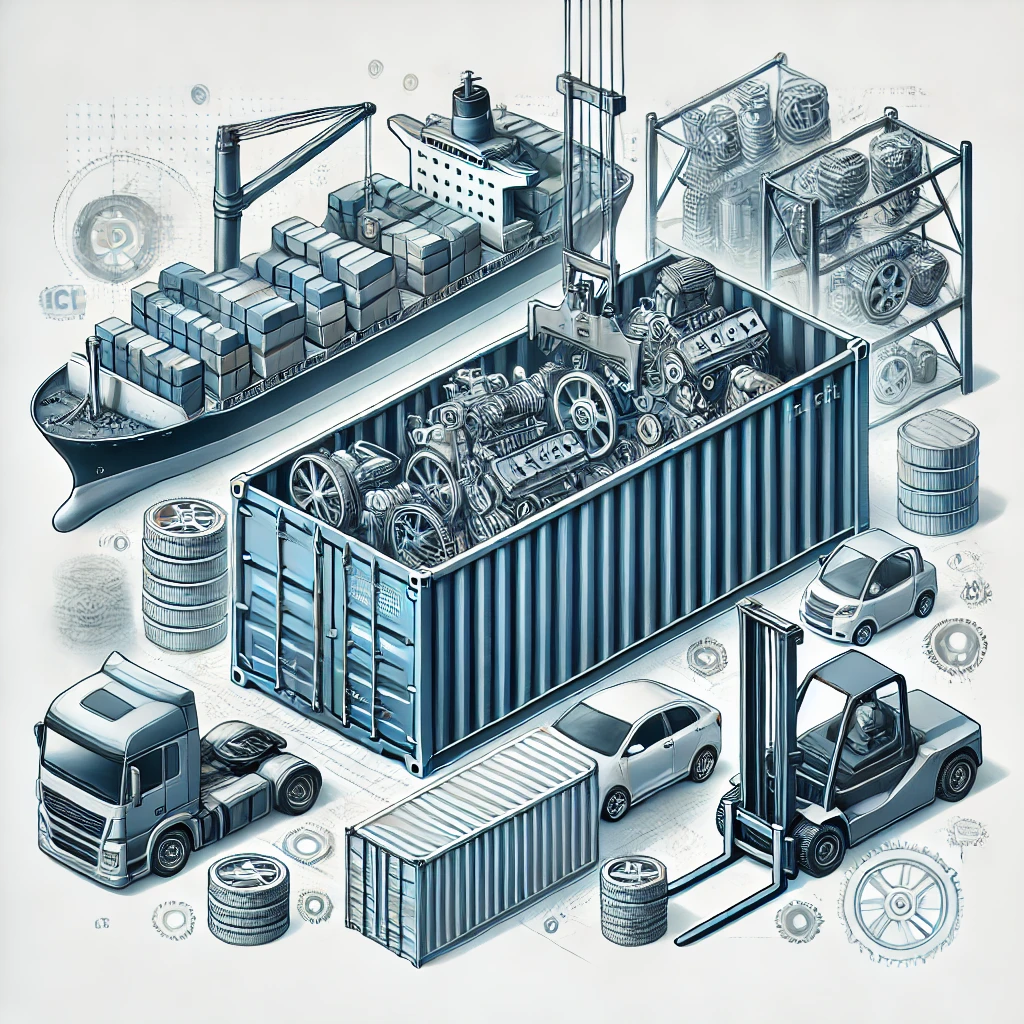
Common Challenges and How to Overcome Them
While FCL autoparts shipping offers many advantages, it’s not without its challenges. Here are some common issues and strategies to address them:
- Customs Delays: Ensure all paperwork is accurate, complete, and submitted in advance. Consider working with a customs broker who specializes in auto parts to navigate complex regulations.
- Damage During Transit: Invest in high-quality packaging materials and use proper load securing methods. Consider shipping insurance for high-value auto parts.
- High Shipping Costs: Consolidate shipments where possible to maximize container utilization. Plan shipments well in advance to secure better rates and avoid rush fees.
- Capacity Shortages: Book containers early, especially during peak seasons, to ensure availability. Maintain good relationships with multiple shipping lines or freight forwarders to have backup options.
- Regulatory Compliance: Stay informed about changing regulations in both origin and destination countries. Regularly update your shipping procedures to remain compliant.
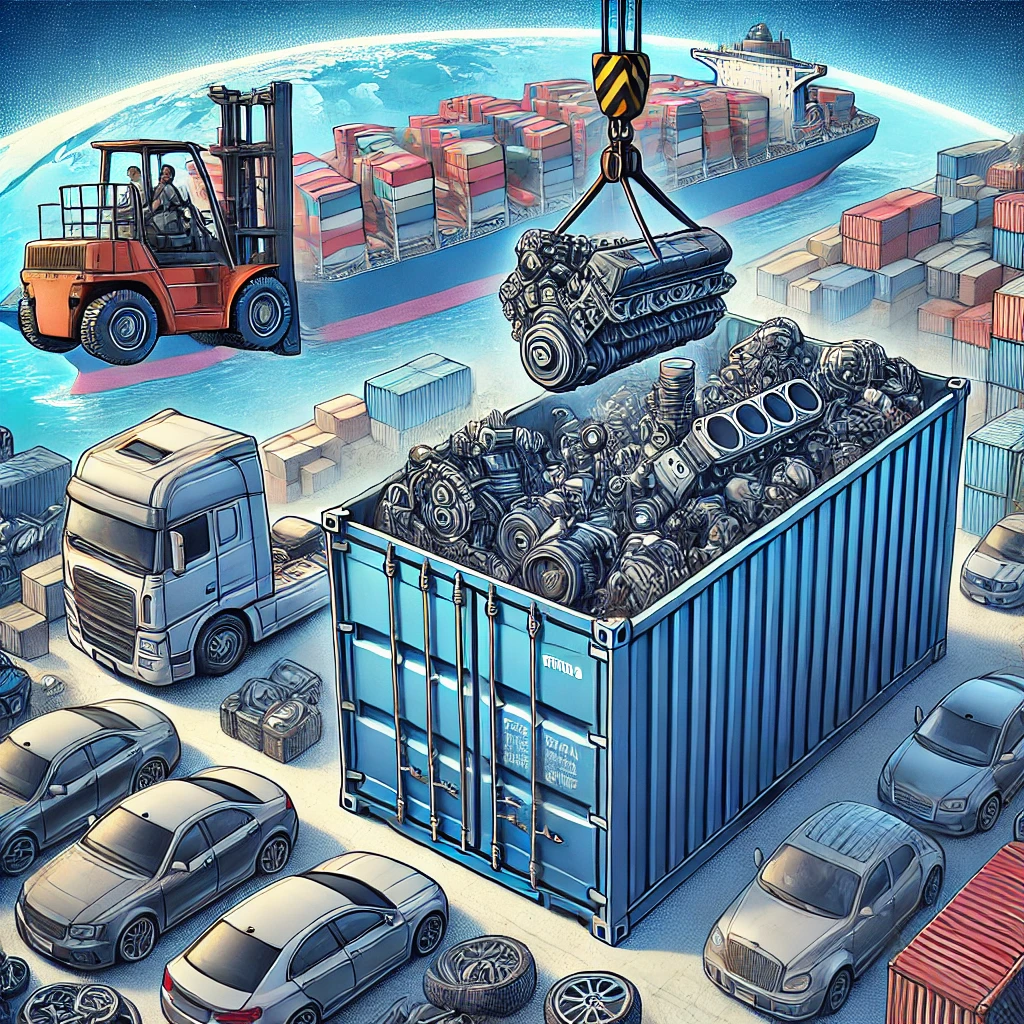
Conclusion
FCL autoparts shipping offers a secure, efficient, and cost-effective solution for businesses shipping large volumes of auto parts internationally. By understanding the process, implementing best practices, and addressing common challenges, you can optimize your automotive logistics operations and ensure your parts reach their destination safely and on time.
Whether you’re a manufacturer, distributor, or retailer in the automotive industry, leveraging FCL shipping can provide a competitive edge in today’s global market. As you consider integrating or expanding FCL autoparts shipping in your logistics strategy, remember that careful planning and attention to detail are key to success.
Optimize Your FCL Autoparts Shipping with Linbis
Ready to take your auto parts shipping to the next level? Explore Linbis’s comprehensive suite of logistics solutions tailored for the automotive industry. Our advanced tools for managing FCL shipments, real-time tracking capabilities, and customs documentation assistance can help streamline your FCL autoparts shipping process.
Don’t let shipping complexities hold your business back. Visit Linbis today to discover how our expertise in FCL autoparts shipping can drive efficiency, reduce costs, and accelerate growth for your automotive business. Let Linbis be your partner in navigating the world of international auto parts logistics with confidence and ease.
